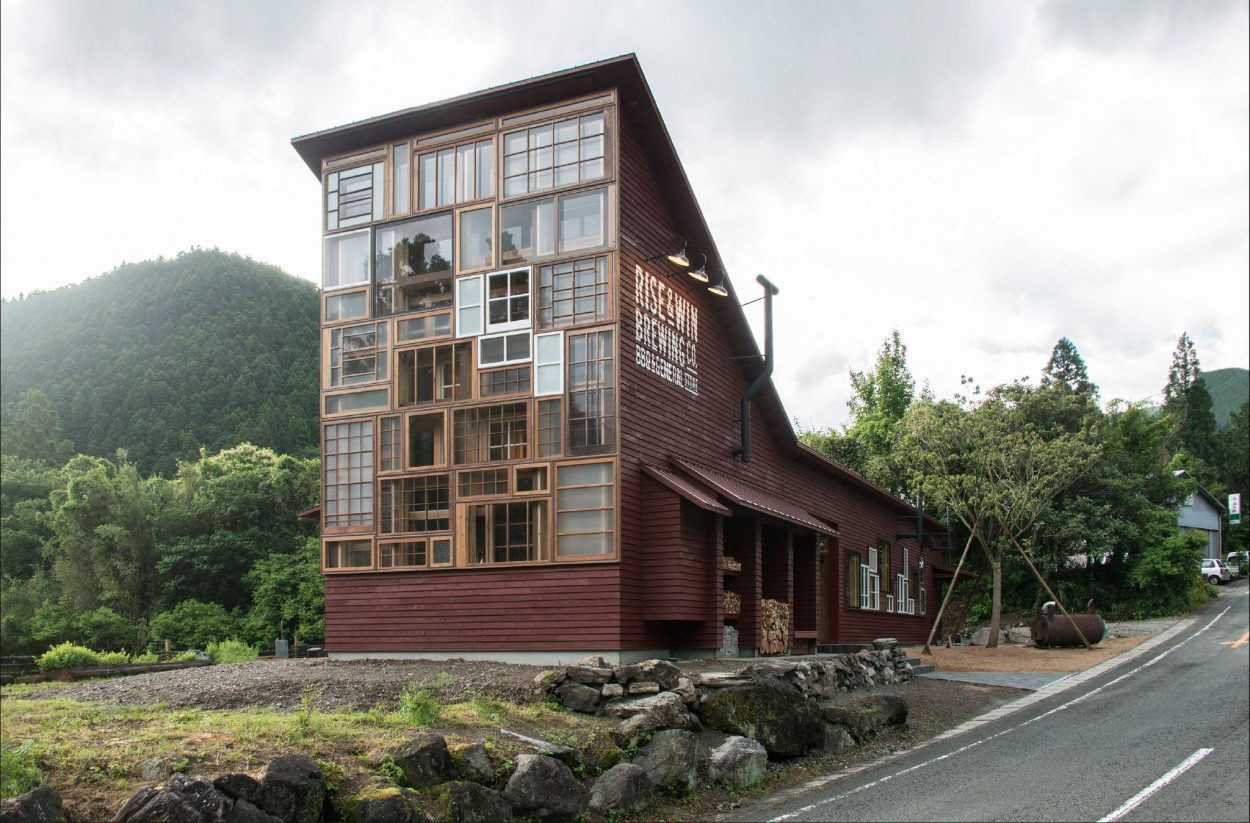Constructing with recycled materials has become a simple solution to the problem of overusing natural resources. In various projects throughout the world, architects choose to use salvaged window frames, old corrugated tin sheets and discarded wooden planks to construct structures that not only portray such a response, but that also result in standout designs.
We have put together examples of unique bars and restaurants all the way from Bali to Kamikatsu, Japan and Copenhagen that show exemplary use of recycled materials, in their facades and interiors.
Bali, Indonesia: The Potato Head Beach Club
On the famed island of the Gods in Indonesia sits a beachside bar and restaurant made of window shutters salvaged from run-down houses: The Potato Beach Club. This unique establishment in Bali draws crowds for its impressive use of colorful painted teak window shutters on the massive colosseum-style structure. The entrance leads to interior spaces filled with tables, chairs and lighting also made from recycled materials.
Ade Herkarisma, the head of architecture and design for Potato Head Beach Club, spoke to ArchiExpo e-Magazine about the inspiration to create something special for the community:
“The fact that it is shaped like a colosseum makes you feel secure. Throughout all our projects, the experience is what is important. We want to touch all the senses of our guests and we wanted to do something to promote local craftsmanship. We came up with the usage of old window shutters that we sourced from houses all throughout Java. All the 6,000 shutters are recycled and construction took about eight months.”
Watch the exclusive video interview with Herkarisma here.
An installation by renowned Indonesian Artist Eko Nugroho called Bouquet of Love is currently showcased at the Potato Head Beach Club. The installation was made from 300 kilograms of collected refuse. Watch the video to see how the Bouquet of Love was created:
https://www.youtube.com/watch?v=F9zWDG7sHd4
Tokushima, Japan: Kamikatz Public House
NAP Architects has earned global recognition for the construction of Kamikatz Public House from recycled materials. Located in Kamikatsu, a town that has attained an 80% recycling rate, the Kamikatz Public House echoes:
“the principles of the community and the wisdom and ways of the people towards waste form through architecture.”
They first built the raw material warehouse, then the brewery and the pub. The architects selected wood waste from a local lumber mill for the outer walls and employed waste brick from demolished buildings in China for interior flooring.
To make the pub energy-efficient and limit electricity consumption for heating and cooling, window fittings taken from abandoned houses were set eight meters high beneath an elevated ceiling. This enhances circulation and evacuates warm air in summer, while the double layer of window fittings traps air, for better winter insulation.
To display their products, they transformed furniture like bridal chests and farm equipment found at the recycle center into shelves. Waste from locally-produced cedar boards was painted with natural persimmon tannin paint and fitted to the exterior walls. They utilized abandoned tiles from a factory for the floor, and empty bottles were used to create the chandelier. Full of improvisation, the space is a masterful mix of waste material showcased in a whole new light.
An increasing flow of tourists has begun to boost the economy of this community that bases its principles on recycling.
Copenhagen, Denmark: Väkst, a Greenhouse Restaurant
On Sankt Peders Stræde in Copenhagen, there is a restaurant called Väkst that has gained international attention since it opened in 2016. The architects designed a greenhouse from recycled windows that livens up the staircase and connects the two stories of the restaurant. The luminous, green space of the top floor and the raw, urban atmosphere in the basement create a harmonious balance between nature and city life.
Väkst guests walk upon mahogany wood surfaces originally from an old grandstand at Lyngby Stadium. There’s also glass shelving repurposed from a palace in Copenhagen. Genbyg, a Danish firm that offers an online collection of recycled materials for construction, provided the recycled wooden boards used to build the cabinet doors.
The lamps are made of old zinc milk cans and the shelves in the bar are made of file drawers from the National Bank ‘s archive. Other repurposed materials include high school auditorium teakwood chairs with a 50s and 60s style, old Swedish fruit boxes and scaffolding planks and old floorboards from an old factory. The ceiling sails in the lower level are made of old tablecloths.
See more images here.
















